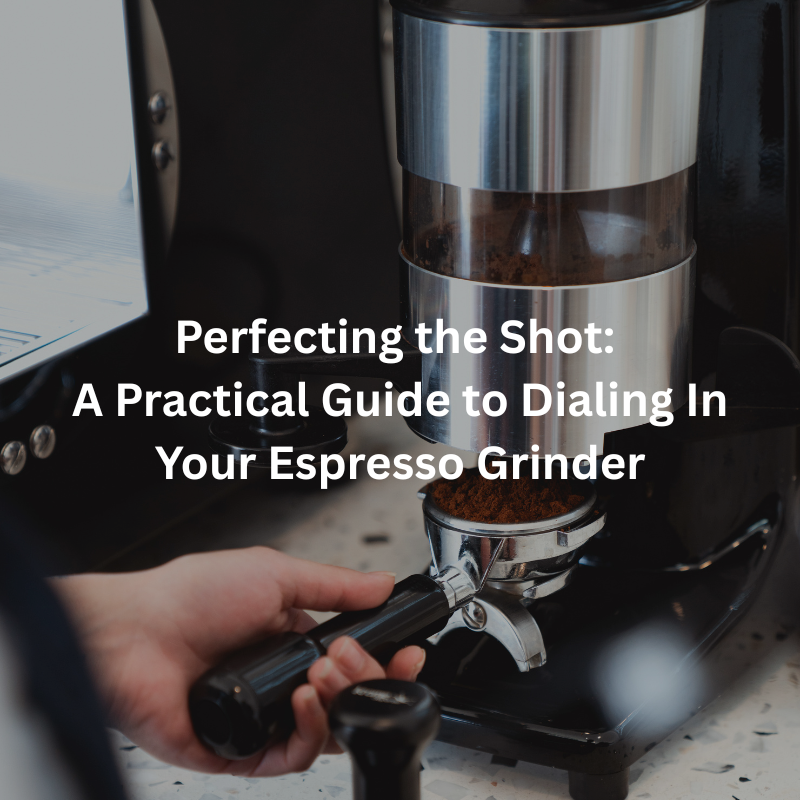Perfecting the Shot: A Practical Guide to Dialing In Your Espresso Grinder
Dialing in an espresso grinder is one of the most important yet often overlooked steps in brewing great coffee. Whether you’re a home barista or just starting out, learning how to adjust your grinder properly can elevate your espresso from average to café-quality. The term “dialing in” refers to the process of fine-tuning the grind size, dose, and shot time to achieve the ideal balance of flavor, strength, and texture. While it may take a bit of trial and error, mastering this process will give you control over every aspect of your espresso.
A good espresso shot should be rich, balanced, and extracted within a window of around 25 to 30 seconds. If your shots are sour, bitter, or inconsistent, chances are your grinder settings need adjustment. Dialing in ensures that water flows through the coffee grounds at the right rate, extracting just the right amount of soluble compounds to deliver a harmonious shot. Understanding what each adjustment does—and how it affects the outcome—can transform your daily espresso routine into a much more rewarding experience.
Understanding Grind Size and Its Impact
Grind size is the heart of dialing in and has the most immediate effect on the taste of your espresso. A grind that’s too coarse will allow water to pass through too quickly, resulting in a shot that’s under-extracted, sour, and watery. On the other hand, if the grind is too fine, the water struggles to pass through the puck, leading to over-extraction. This produces a shot that tastes bitter, overly intense, and often sludgy in texture. The sweet spot lies in a fine, even grind that resists the water just enough to extract all the right flavors.
Making small adjustments to your grinder—often just a click or two—can produce significant changes in taste and shot timing. It’s important to make these changes gradually and test each shot. As you dial in, you should also keep an eye on your espresso’s flow rate and appearance. A good extraction will flow in a steady, syrupy stream, forming a thick crema on top. Achieving this consistently means your grind is well-matched to your machine, your beans, and your technique.
Balancing Dose, Yield, and Shot Time
While grind size plays a central role, it works in tandem with other factors like dose, yield, and shot time. The dose is the amount of ground coffee you place in your portafilter, and the yield is how much liquid espresso ends up in your cup. These variables are closely related: changing one often requires adjusting the others to maintain balance. For most double shots, a common starting ratio is 1:2—meaning 18 grams of ground coffee yielding about 36 grams of liquid espresso in around 25 to 30 seconds.
If your shots are pulling too fast or too slow, adjusting the dose or grind can bring things back in line. A higher dose might require a slightly coarser grind, while a lower dose may need a finer grind to maintain pressure. Keep in mind that even the freshness of your beans and environmental conditions like humidity can affect how your espresso behaves. Consistency in your dosing technique and careful observation of the shot can help you make the right adjustments and get closer to your ideal cup.
Monitoring Flavor and Making Fine Adjustments
Once your timing and ratios are in the right zone, taste becomes the final and most important indicator of success. Espresso should strike a balance between sweetness, brightness, and bitterness, with none of the three dominating. If your shot tastes overly sharp and acidic, it’s likely under-extracted and needs a finer grind or longer brew time. If it tastes dry, hollow, or burnt, it may be over-extracted, requiring a coarser grind or reduced dose.
Dialing in isn’t a one-time task—it’s a process that requires revisiting every time you switch beans, open a fresh bag, or notice a change in taste. Keeping notes on your grinder settings, doses, and results can help speed up the process in the future and reduce guesswork. Over time, you’ll begin to recognize the small details that affect your espresso’s flavor and learn how to respond quickly to bring it back into balance.
Conclusion
Dialing in your espresso grinder may seem technical at first, but it’s a skill that pays off with every rich, balanced shot you brew. By learning to fine-tune grind size, dose, and extraction time, you take control of your espresso and unlock the full potential of your beans. With a bit of patience and practice, you’ll not only improve the consistency of your coffee—you’ll gain a deeper understanding of the craft behind every cup.




